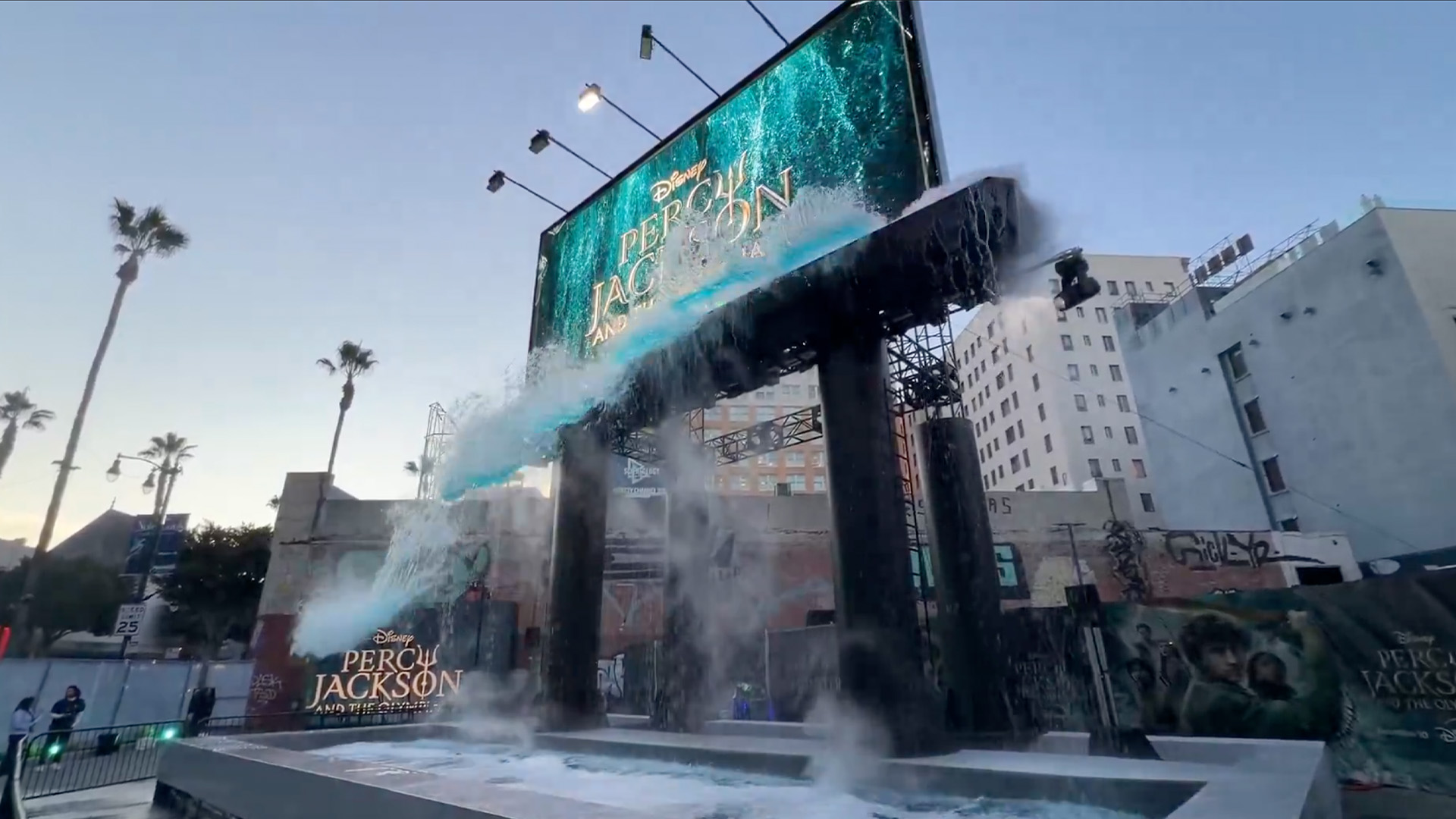20 best designs in video games
Forget the obsession with photorealism, we pick out the bits of games that focus on gorgeous design.
Anything you can possibly imagine can be realised in a video game, thanks to advances in technology. So why dedicate all your time to simply replicating the designs and patterns that we're used to in reality?
Instead, the designers who get it right play to the strengths of the medium, by creating games that are visually striking and artistically inspiring. Here, we pick our 20 favourite designs in games history and grab some leading games designer views on these stunning elements – from chilling character costumes to outrageous environments.
01. The hood – Assassin's Creed
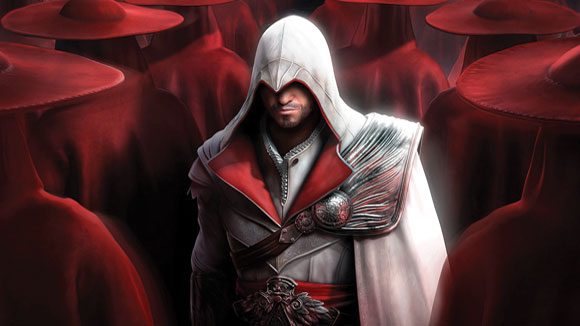
The stories of the Assassin's Creed heroes are separated by hundreds of years, but there's one stylish visual hallmark that ties them together: the hood.
Fashion may change over the centuries, but hoods will always be around in some form, which makes Ubisoft's decision to incorporate it into their costume designs a stroke of genius. It never looks out of place or anachronistic, whether you're in the 12th Century Middle East, or the modern day United States.
It also makes sense in the context of the game, as the secretive Assassins use it to conceal their identity. Each character has their own distinct costume – from Altar's simple white robes, to Ezio's elaborate renaissance garb – but the hood is always at the centre of the design, linking them in a subtle, stylish, and visual way. Not only does it look cool, but it makes sense for the characters, and the eras they live in.
Assassin's Creed designer view
David 'Vyle' Levy, concept artist on Assassin's Creed, says: "This was probably one of the most challenging projects I've ever worked on, especially regarding the balance between fantasy and hyperrealism. The difficult balance the team was trying to reach was one of a very 'edgy' mix of an ancient culture, depicted with a very modern, graphic, visual language."
Daily design news, reviews, how-tos and more, as picked by the editors.
02. Master Chief's armour – Halo
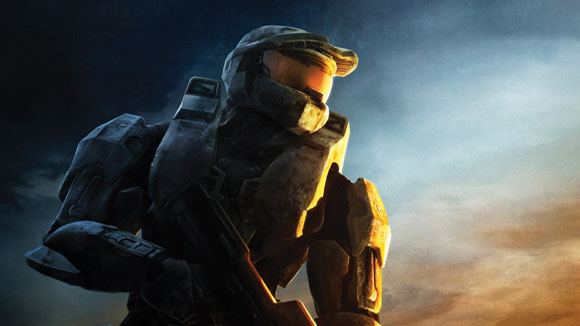
Hardcore Halo fans know it as the MJOLNIR Powered Assault Suit. For the rest of us it's that awesome green armour that Master Chief wears – the faceless hero of the Halo series.
Halo's world can best be described as 'hard sci-fi'. It's a rugged, believable universe, with two unique sets of designs: the cold, functional vehicles and armour of the humans, and the bright, colourful, otherworldly ships and weapons of the Covenant – which went on to inspire the outlandish weapons in Neill Blomkamp's modern sci-fi classic, District 9.
The armour's eye-catching green colouring has become synonymous with the series. Its functional design fits in with the hard-edged military aesthetic of the game world, and it hides Master Chief's face. Developers Bungie did this on purpose, because they wanted him to be an anonymous cipher for the player: he isn't a character, he's YOU.
Halo designer view
Joe Staten, cinematics director at Bungie, says: "Early on, the team weren't necessarily considering using visual design to make people want to play in the world they were creating. But Master Chief is really what kicked off the creativity. People reacted really well to him."
03. Hengsha – Deus Ex: Human Revolution
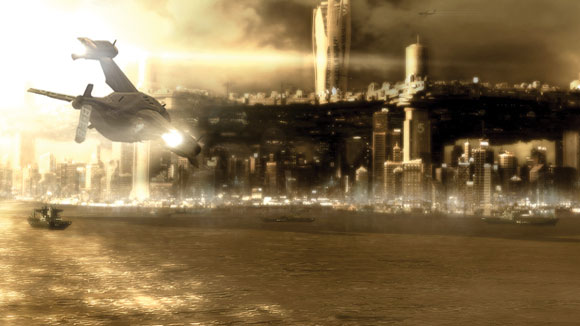
Human Revolution has a bold, distinctive art style. Its 'near future' setting is incredibly evocative, riffing on films like Ghost in the Shell and Blade Runner, but at the same time carving its own identity. It's one of a few modern, big budget games that you can recognise instantly from just glancing at a screenshot.
The Chinese island of Hengsha is the best example of its dramatic vision of the future. It's an enormous two-level city that separates the poor in the lower levels, and the wealthy in the gleaming towers on top. It sounds absurd, but it's based it on a real proposed design.
It feels futuristic, but is still grounded in reality. The concept artists, and lead designer Jonathan Jacques-Bellette, weren't just inspired by other games; it was modern industrial design, fashion, and architecture they looked at first. Over 1,400 individual objects were designed to 'clutter' the levels and make them seem lived in, as well as hundreds of brand logos to give the world depth and credibility. Few games are as immersive, and that's why it works.
Deus Ex designer view
Jonathan Jacques-Bellette, art director at Eidos Montral, says: "Our goal with Human Revolution was to give it its own distinctive aesthetic flair. Not only did I want the game to look different and singular from other futuristic games, but I planned to steer away from the '80s concept of science fiction that we've been circularly perpetuating in our industry. I find it fascinating that a lot of the futuristic designs in games are aesthetically outdated. We tried to apply modern design theories to the game's visual design."
04. The Colossi – Shadow of the Colossus
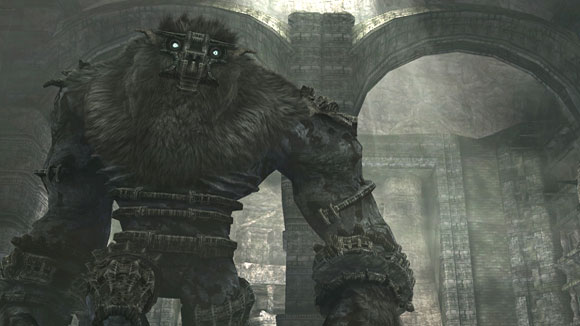
Team Ico, the Japanese studio behind Shadow of the Colossus, is famed for its understated and minimalist design style. Its world is sparse, beautiful, and atmospheric, and laced with mystery, as are the beasts that inhabit it.
They look like they've been ripped from the earth; part organic, part man-made. They have fur and leathery skin, but ancient, crumbling ruins jut from their bodies. It's a bizarre, surreal aesthetic, but perhaps the most inspired aspect of their design are the eyes.
There's a grey morality to the game. You have to kill these monsters to bring someone you love back from the dead; a selfish pursuit, and the colossi never attack you first. It's almost as if you're the bad guy. There's a weird sense of guilt as you kill them, which is partly due to the sad, innocent eyes that stare at you as you do it. Team Ico managed to make these creatures both intimidating and sympathetic, all through their appearance.
Shadow of the Colossus designer views
3D artist, and co-owner of CG production studio MDI-Digital, AJ Jefferies, says: "Each of the game's 12 colossi has a distinct, individual design. I love that their structure is directly tied to the landscape and architecture in which you find them. The broken stone and shaggy scruffs of fur that cover their bodies let you know that these creatures are ancient. It's as if the sparse landscape you've been travelling through has ripped a chunk from itself and decided to go for a walk. They truly feel part of the world they live in."
Gary J Lucken, pixel artist at Army of Trolls, says: "One of my favourite games of all time. I love the design as a whole, but the creatures are amazingly well crafted. They have a sadness about them. It feels a bit like taking down The Iron Giant."
05. Metal Gear RAY – Metal Gear Solid
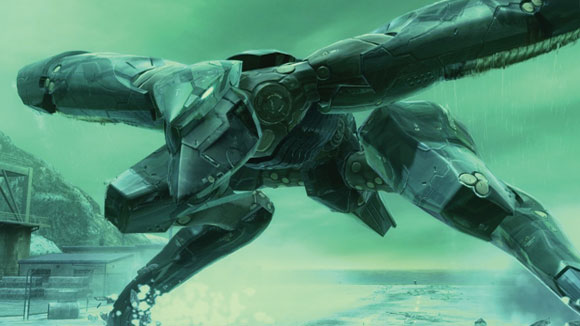
Illustrator Yoji Shinkawa has been the lead concept artist on the Metal Gear Solid series since the very first game. His designs are created in the form of elegant, expressive pencil sketches, then translated to the game by Hideo Kojima's team of digital artists.
Mechanical design is something he excels at, and Metal Gear RAY – an amphibious bipedal tank – is one of his most memorable creations. While robots in Western media are square and clunky, Japan favours more organic designs; the kind seen in classic anime. RAY is a machine, but looks like a sea creature, reflecting its ability to move around underwater.
Adapting in-game models from Shinkawa's graceful hand-drawn sketches gives the Metal Gear series a classy, stylised edge, like the pages of a manga come to life.
Metal Gear Solid designer view
Jonathan Jacques-Bellette, art director at Eidos Montral, says: "When referencing video game aesthetics, the MGS franchise has been my benchmark since it first came out on the Playstation. In my opinion, it's probably the most visually polished series ever made. The degree to which it makes no compromise to any of its visuals – be it a simple prop or a full fledge main character – is something most video game companies don't even understand.
"I remember when Konami mentioned how much time and energy they spent just to figure out which type of flower they would but in the final battle against The Boss in MGS3. So many people in the industry, developers and journalists alike, just couldn't believe it, just couldn't rationalize or justify putting so much importance on a flower showing up during a final boss fight. But see, that's exactly what it's all about! Visuals in video games aren't just about technical prowess. They are – first and foremost – about communicating ideas, meanings, and emotions. You either understand this or you don't."
06. Aperture Science – Portal
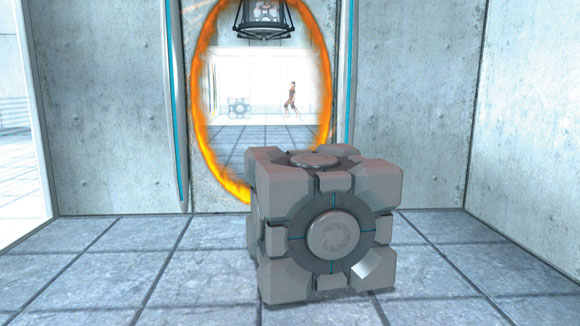
Nothing else, in any medium, looks like Portal. The Aperture Science Enrichment Centre is the star; an abandoned facility made up of sparse, white testing chambers. You're forced to work your way through them one by one, solving mind-bending, and fiendishly clever, multi-dimensional puzzles.
Instructions are relayed by simple graphics of stick figures, and the objects you use to solve the game's genius conundrums – buttons, switches, cubes – are all boldly designed and instantly recognisable. This visual language becomes intrinsic to the gameplay in a supremely clever marriage of mechanics and design. It's a smart game.
Highlighting the sinister nature of the facility, occasionally the gleaming white walls break away, revealing eerie, unseen areas that are gloomy and rusting, and scrawled with creepy graffiti from previous test subjects. In the second game, set hundreds of years in the future, the place becomes overgrown with thick jungle foliage.
Portal designer view
Kim Swift, level designer on Portal, says: "Originally the environments were complex, but that was the wrong idea for Portal. Because we're introducing a new concept, it was best to keep it bare bones. In one section, all you were supposed to do was put a box on a button and open a door. One player literally spent 30 minutes trying to push a shelf onto the button, meanwhile, the box was sitting right there. That's how the clinical environment design came to be."
07. Rapture – BioShock
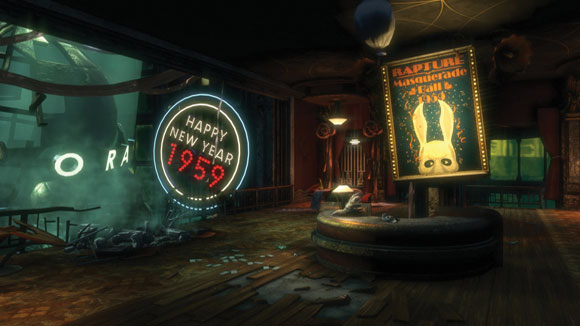
Rapture is an underwater city hidden in the depths of the Atlantic Ocean. It was built in the '50s as a haven for the world's intellectual elite, but after the discovery of a gene-altering sea slug, things went mental, and the place became infested with crazed 'splicers' and fell into disrepair – which is when you stumble upon it at the beginning of the game.
It's a place frozen in time, and you see the remains of the fallen society all around you. The city tells a story through its superb level design. You see cheery neon signs advertising luxury homes, abandoned shops, and bodies of murdered residents, and learn about the doomed city as you move through its leaky halls. It's a type of interactive visual storytelling unique to games, and BioShock's setting is still unmatched. It feels like a real place.
The optimistic advertising of the '50s has become kitsch, and is routinely abused by ironic greetings cards, but Rapture presents it in a completely new light. There's something fascinatingly macabre about seeing the ruins of a once opulent society, completely destroyed by its own greed and rampant consumerism.
BioShock designer view
Ken Levine, creative director at Irrational Games, says: "I don't think BioShock is competing with films, books, and other media aesthetically. A book is a book, a movie a movie, a game's a game. However, our medium has so much untapped aesthetic capacity. But the 'verbs' of our aesthetics are new and we're just figuring them out."
08. Vault Boy – Fallout
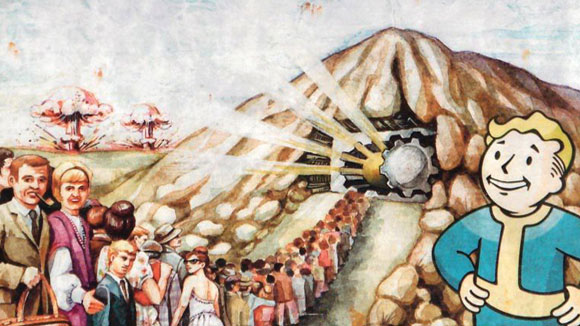
The designers of Fallout also looked at saccharine '50s adverts to inspire their Vault Boy character. The game imagines a world where the 1950s idea of the future actually happened, and rocket cars, ray guns, and robot butlers were commonplace. But then it all goes wrong, and the world is destroyed by nuclear war, enivitably turning America into a sparce wasteland.
Vault Boy is an advertising mascot for a company called Vault-Tec who, in the game, build atomic shelters. His smiling face jars with the misery of the post-nuclear landscape, and he's also integrated into the game's interface. All of your skills and abilities are represented by a grinning Vault Boy, whether he's firing a bazooka, or chopping someone's head off... naturally.
It's an iconic design, influenced by '50s Americana, and classic icons like the Big Boy Restaurants mascot. It's always aesthetically intriguing to see an idyllic setting gone wrong, and both Fallout and BioShock have made that idea their own.
Fallout designer view
Leonard Boyarsky, art director on Fallout, says: "When I told people about my ideas for the look of the game, they looked at me like I was crazy. Why would we make a post-apocalyptic game look like a cheesy B-movie? Much to Interplay's credit however, even though they thought I was insane, no one said we couldn't do it. So we did. I started pitching the '50s vibe so early that there were really never any other competing art styles considered."
09. The Normandy – Mass Effect
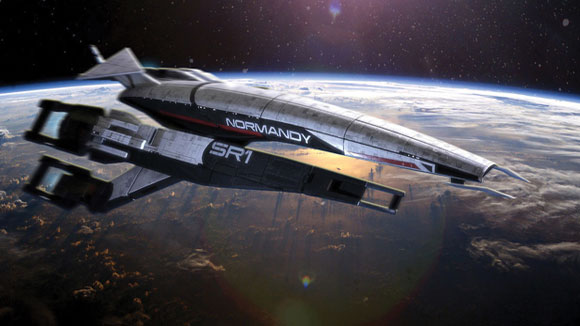
The Mass Effect series is heavily inspired by the classic science fiction films of the 1970s. It's a space opera on par with Star Wars, but its visual design is edgy, hard, and realistic. Think 2001: A Space Odyssey, Silent Running, or Alien.
The best example of this is the lead character's flagship, the Normandy. The temptation for a lot of sci-fi designers is to make ships look curvy and overtly futuristic, but the Normandy is functional and low key; just as a military ship would be.
According to the game's mythology, the ship was co-built by humans, and an alien race known as the turians. This is reflected in the design, which has elements of both present day military hardware, and something distinctly not of this world. The interiors were similarly well-designed, and exploring between missions, talking to your crew and learning about the history of the game's rich universe, made the place feel like home.
Mass Effect designer view
Gary J Lucken, pixel artist at Army of Trolls, says: "It's so lovely and slick, and embedded into my memory. It was sad to walk around an empty Normandy in the third game. It was almost like those bits at the end of Big Brother where they play sound clips over an empty house. I could almost hear Mordin's singing, or a fight kicking off after a loyalty mission. It's laid out so well; it's logical, and you remember where things are. The decal design is top notch, and I'm sure it influenced the design of the ship in Prometheus somehow."
10. Squall's gunblade – Final Fantasy VIII
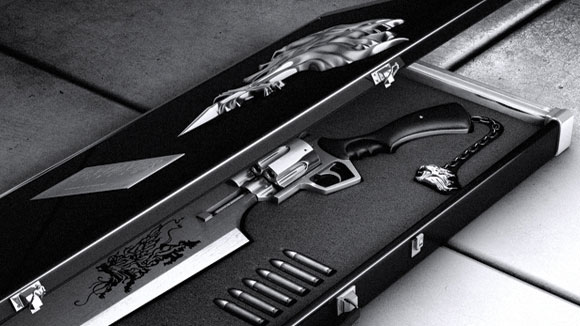
It's a gun, and a blade. It's a gunblade! Square Enix are famed for their ridiculously impractical weapon designs, like Cloud's iconic buster sword, which is twice his size. But it's the gunblade that wins out for us, an engraved sword with a revolver barrel at one end. As hero Squall struck an enemy, it would simultaneously fire a bullet. Obviously.
Square's design ethic, especially in the Final Fantasy series, is being as cool as possible, which results in ludicrous designs like this. That's what defines the series. It's in no way tethered to reality, but still manages to create a compelling universe that you really care about and believe in.
Japanese games are still unmatched when it comes to exaggerated, dramatic visual design, and long-time Square Enix artist Tetsuya Nomura is responsible for the majority of the series' most enduring designs, including this unlikely weapon. Like Metal Gear's Yoji Shinkawa, Nomura's designs are realised as intricate drawings before making it into the game.
Final Fantasy VIII designer view
Yoshinori Kitase, director of Final Fantasy VIII, says: "What I wanted to put in the game was a little reality, and combine it with unreality. By showing it through the eyes of normal people, it makes the game more real. We left Nomura totally in charge of character design. The first illustration for the game was of Squall and his gunblade. We thought about what kind of world this character would exist in, and worked the story out from there."
Next page: 10 more iconic video game designs
